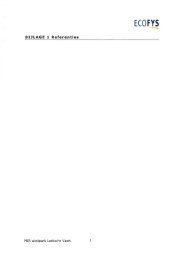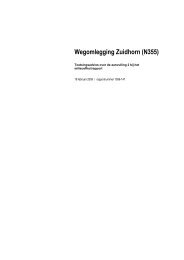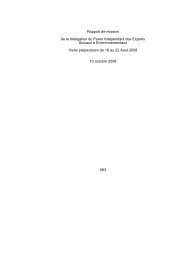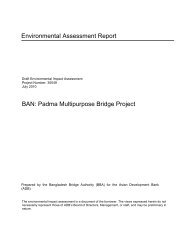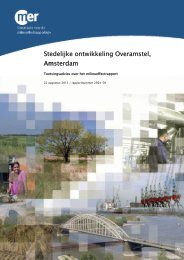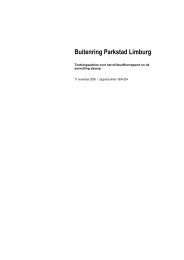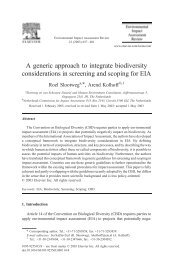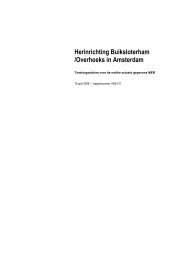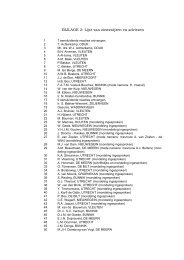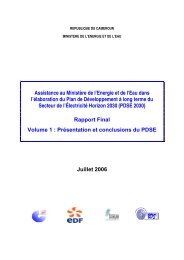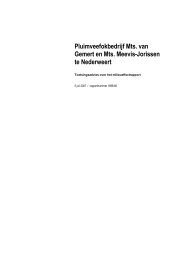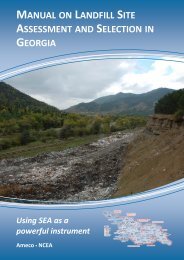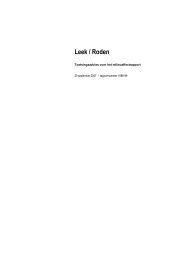Scoping Advice for the Dutch IWRM Support Programme Rwanda
Scoping Advice for the Dutch IWRM Support Programme Rwanda
Scoping Advice for the Dutch IWRM Support Programme Rwanda
You also want an ePaper? Increase the reach of your titles
YUMPU automatically turns print PDFs into web optimized ePapers that Google loves.
APPENDIX 910 steps <strong>for</strong> SEAInternational best practice suggests <strong>the</strong> following sequence of steps which help guide each SEA,allowing <strong>for</strong> enough room to tailor its design to <strong>the</strong> specific programme, plan or policy, as well ascontext and circumstances.The NCEA uses <strong>the</strong>se steps as guidance, a checklist, and not as a fixed framework <strong>for</strong> SEA.Depending on <strong>the</strong> specific characteristics of an SEA, some steps may be skipped, o<strong>the</strong>rs may berepeated, or <strong>the</strong>y may be followed in a different order or at <strong>the</strong> same time.Particularly in cases where questions remain regarding <strong>the</strong> planning process, such as in <strong>the</strong> SEAs<strong>for</strong> <strong>the</strong> EKN’s <strong>IWRM</strong> support programme (see section 5.1) and <strong>the</strong> proposed SEAs <strong>for</strong> catchmentplans (5.3), <strong>the</strong>se steps are very helpful and provide structure where that may be lacking in <strong>the</strong>planning process. When that process is much clearer, such as in <strong>the</strong> case <strong>for</strong> <strong>the</strong> Master Plan, <strong>the</strong>ToR <strong>for</strong> <strong>the</strong> SEA can be much more detailed and tailored to <strong>the</strong> situation. In such a case, <strong>the</strong> tensteps have less added value.Within <strong>the</strong> contact of this report, <strong>the</strong> NCEA used <strong>the</strong>se steps to structure <strong>the</strong> ToR in 5.1 and in5.3as well:Screening1. Reach consensus on <strong>the</strong> need <strong>for</strong> SEA and its link to planning2. Find stakeholders and announce start of <strong>the</strong> plan process<strong>Scoping</strong>3. Develop a shared vision on problems/objectives/alternatives4. Do a consistency analysis: new versus existing objectives5. Set ToR <strong>for</strong> <strong>the</strong> technical assessment, based on scoping resultsAssessment6. Assess <strong>the</strong> impacts of alternatives and document this7. Organise (independent) quality assurance of documentationDecision making8. Discuss with all stakeholders <strong>the</strong> alternative to prefer9. Motivate <strong>the</strong> (political) decision in writingMonitoring10. Monitor <strong>the</strong> implementation and discuss <strong>the</strong> resultsDerived from: OECD-DAC Good Practice Guidance in Applying SEA in Development Co-operationAppendix 9 page -1-



